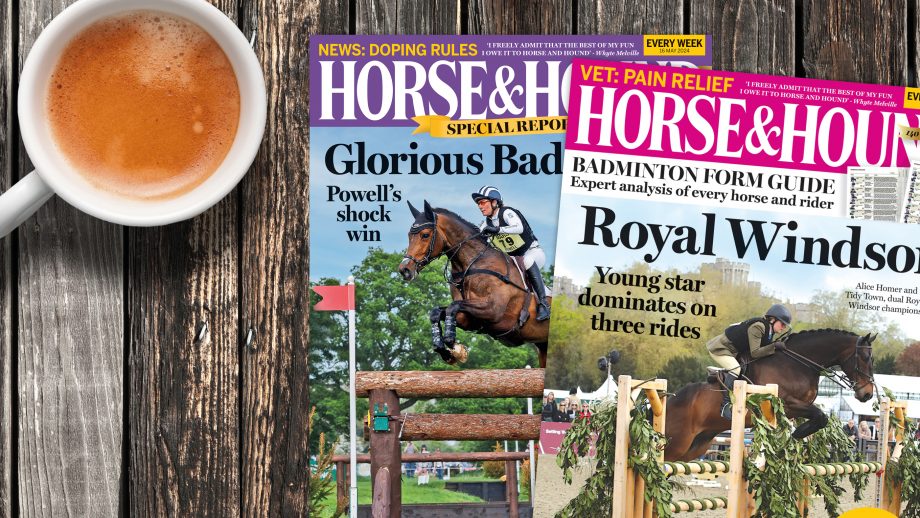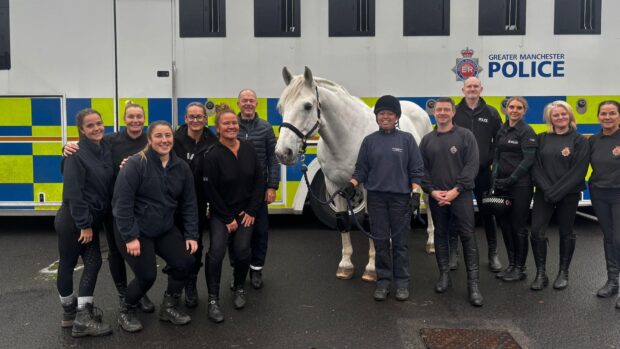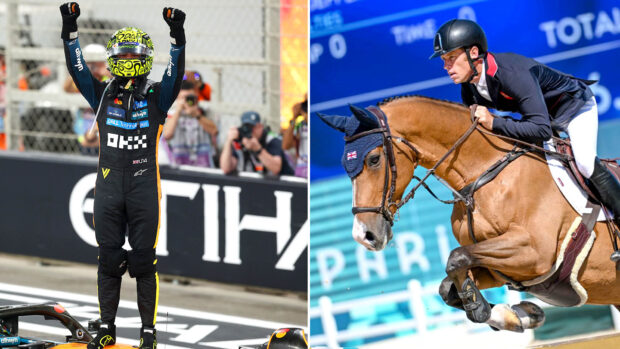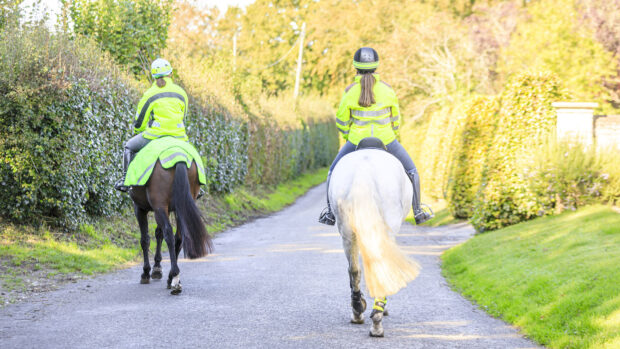The biggest secret of beginner liberty training according to Emma Massingale? You’re probably already doing it.
“A lot of people have got into the mindset that you’re not doing liberty unless you’re in an arena,” she tells H&H. “But really, you’re doing it every time you touch your horse, every time you go near him.
If you’re reading this, you might not need an introduction to liberty training. Briefly, though, liberty work can be defined as ground or ridden activity performed without restraint, tack, or with the horse on any kind of lead or lunge rope.
According to Emma, anything that demonstrates togetherness and a relationship with your horse – be it picking out his feet or grooming – is in essence liberty, especially if you can do these things without restraint.
“When people have a great relationship with their horses, it’s really easy to teach those horses liberty,” she adds.

If you can groom your horse without restraint, you are well on your way to starting liberty work. Credit: Alamy
Beginner liberty training: asking the key question
Working with horses requires mutual cooperation and enthusiasm – especially at liberty.
“Another way to look at it is like dog training,” says Emma. “You don’t let your dog off the lead in an uncontrolled environment unless you know you have his attention. It’s the same with liberty.”
How do you know you have your horse’s attention?
“My favorite question that I always ask my team is: ‘are you with me?’ If they answer ‘yes’, your work completely transcends equipment.”
How do you ask?
According to Emma, there is no one way to ask your horse if he’s “with you”.
“For someone doing beginner liberty training, you might start by tucking the leadrope into your beltloop so there’s no pressure on it and seeing if he’ll follow you as usual, or knot your reins while riding and see if he’ll keep to a circle.”
A horse that stays with you without “hand holding” from a leadrope or rein aid is one who is tuned in to his handler or rider.

A horse, at liberty, tuned in to his handler. Credit: Alamy
What if the answer is no?
If your horse wanders off, Emma suggests trying again in a more controlled space, such as the arena, lunge pen or yard.
Emma adds that to help cultivate your togetherness, these everyday examples of your horse’s attention need to be rewarded.
“Maybe you never need any pressure on the rope when you handle your horse on the yard – this in itself shows that your body language alone is enough to draw your horse to you,” explains Emma.
“While it seems par for the course, we need to be recognising these things, marking it with a cue like ‘yes’ and a reward. It’s all about praising behaviour you like in a way your horse understands.”

Praise the horse for desired behaviour in a way that he understands, such as by treats or scratches. Credit: Alamy
Breaks, scratches or pony nuts are all suitable rewards for desired behaviour, even if it doesn’t feel like an especially teachable moment. But what about if you are ready to teach something new?
A question of motivation
“It took me four days to teach my stallion to lie down,” explains Emma. “He’d been playing with my donkey, who’d actually taught him to lie down himself by grabbing his fetlock. So I thought, I’ll put a cue on it.
“The first three days, he offered the head posture and lowered a bit, but didn’t lie down,” she continues.
“On day four, he was starting to get it and finally did it, so I marked the behaviour with a carrot and a ‘yes’. He was like, ‘why didn’t you say so?’ And the behaviour became repeatable.”
Emma cites this story as an example of turning extrinsic motivation into intrinsic motivation.
“Initially, the motivation to perform the behaviour is the promise of external reward,” she says. “Over time, a scratch on the wither and my positive body language is enough to motivate him – the satisfaction comes from within.
“Learning something new is hard work, and I think we can all agree hard work should be fairly paid,” she continues.
“While the cue is new, we tap into extrinsic rewards that compensate effort. In time, acting on the cue becomes easy; that extrinsic motivation transforms into intrinsic.”
Too treat focused?
If your horse is especially food-oriented, you could ditch the apple or carrot for a treat with less power, such fibre cube or a handful of chaff.
“You could also place the treats close by, but out of reach of wherever you’re practising the behaviour such as over the gate, fence or stable door,” says Emma. “Use the ‘yes’ to mark desired behaviour and follow up with the treat.”
Deepening the relationship

Emma Massingale and her horse walking together, at liberty, on the beach. Credit: Alamy
As you reflect on your day-to-day life with your horse, you can probably identify a few areas where you’ve been doing basic liberty all along. Marking that automatic, everyday behaviour with rewards and a “yes” will not only tell your horse he’s doing something brilliant, but mean that when you ask “are you with me?”, the answer will increasingly be yes.
For Emma, your horse’s enthusiasm is your foundational ingredient.
“If they say ‘yes’, it transforms the relationship and you can shape it into anything you can dream up. That’s why there’s such a variety in liberty and horsemanship with what trainers do.”
Did you enjoy this article? You may also like to read…

Is your horse too sharp to ride? Try these three-minute groundwork exercises to take off the edge and engage their brain before you get on

Groundwork for horses: what it is and why it’s useful

Clicker training: an expert guide to why, how and when to use it to benefit your horse

‘Showing the world what’s possible’: teenage rider showjumps bridleless – and has big dreams

Subscribe to Horse & Hound magazine today – and enjoy unlimited website access all year round




